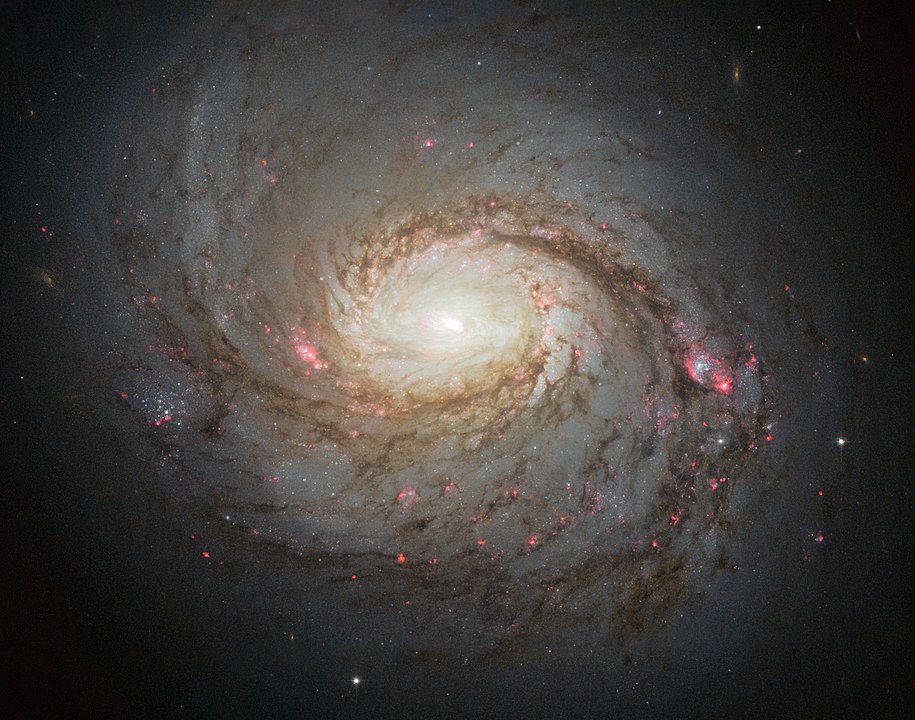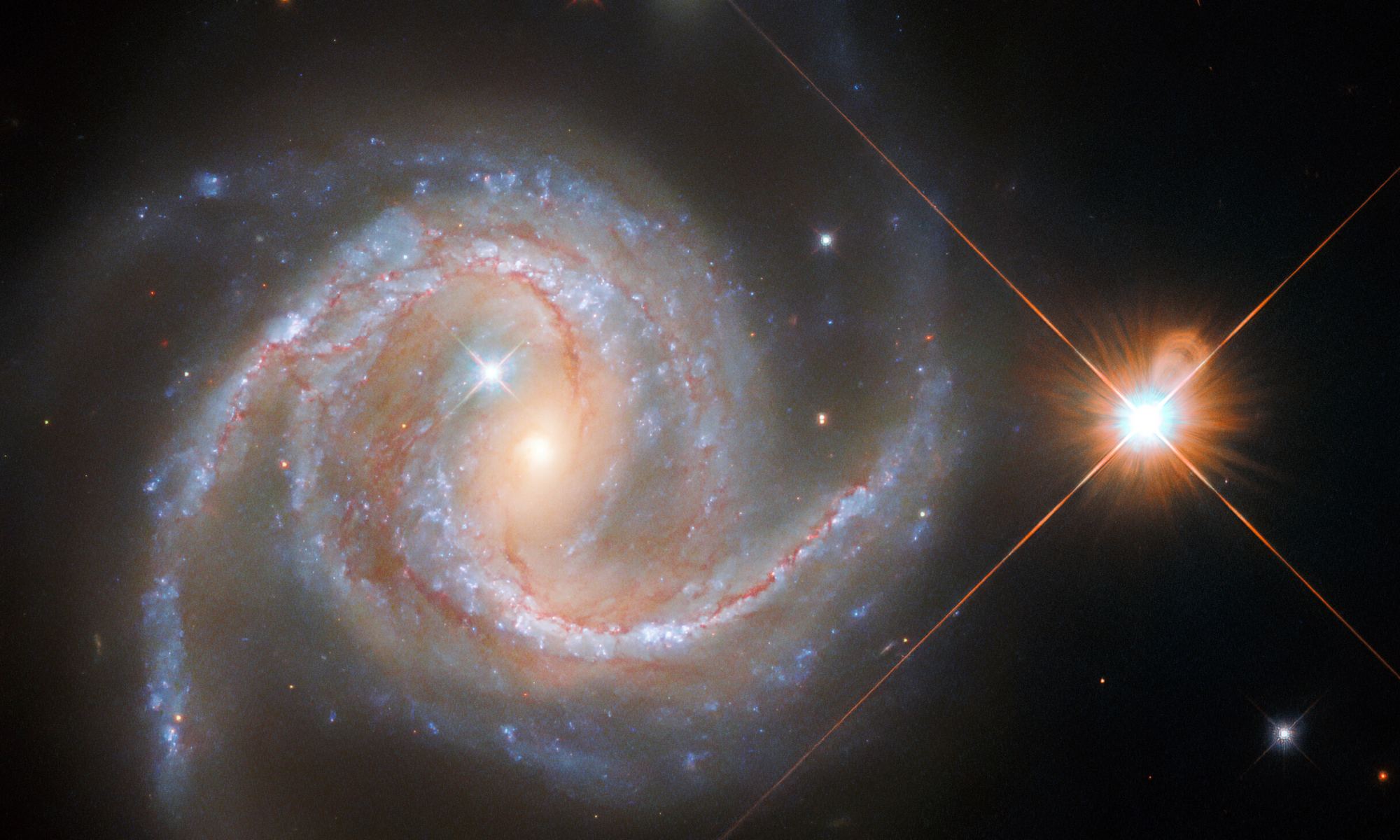Hubble Space Telescope observes a lot of galaxies. Some of them are wild-looking while others seem fairly placid. Recently, it looked at NGC 5495, which lies about 300 million light-years away from Earth. You wouldn’t know just by looking at it, but this galaxy has some pretty hot action happening in its core.
It’s known as a Seyfert galaxy, which means it has a very active nucleus. There’s a supermassive black hole in there, sucking in gas and dust and releasing bright radiation as it eats. Astronomers want to know more about this monster—in particular, its mass. That’s why they’re using Hubble Space Telescope to observe it. The Wide Field Camera 3 is well-suited to image the bright core and separate out the various light sources nearby so they can zero in on the region around the black hole.
Diving into a Seyfert Galaxy
Galaxies with active nuclei are fascinating places. Most look like pretty normal spirals, particularly through optical telescopes. But, if you observe them in other wavelengths—say x-rays, ultraviolet or infrared, their cores stand out like beacons. The cores are usually brighter than anything else in the galaxy. That tells you something energetic is happening there. That brightness actually is a “death scream” of sorts. Matter accretes onto the black hole and gets superheated by high-speed collisions. That maelstrom is what’s giving off light across much of the electromagnetic spectrum. About 10 percent of all galaxies are Seyferts and they were probably quasars earlier in their histories.

Astronomers classify Seyferts into Type 1 and Type II objects. If you look at their emission lines (that is, the spectra that show the light they emit), the data show that each kind has highly excited gas near the black hole. There are important differences though. The Type 1 Seyferts have very “broad” lines, which means that the gas is moving very quickly around the black hole—at velocities more than 1,000 km/sec. On the other hand, the Type II Seyferts have narrower lines, and that means gas in the core is moving much more slowly.
Our own Milky Way is not currently a Seyfert. However, it does have a central supermassive black hole called Sagittarius A*. Right now, it’s very quiet, only occasionally gobbling large amounts of gas and dust. It could have been a Seyfert in the past, or it could be in the future if something happens to feed our black hole and cause it to “erupt” with activity.
What HST Tells Us About NGC 5495
In the HST image of this spiral its arms have bands of dust threaded throughout, and there are star birth regions here and there. Notice the strands of blue in the arms. Those mainly hot young stars emit a lot of ultraviolet light. The most massive of these stars will explode as supernovae ten million or so years from now.
The core of the galaxy looks like there’s a bar feeding material into the core. In many spiral galaxies, the bars host stellar nurseries. Astronomers are quite interested in these bars because they indicate something about the age and evolutionary state of the galaxy itself. Interestingly, central bars may come and go every couple of billion years.
And, then there’s that bright central region, where the monster black hole lives and feeds. It’s likely quite massive—millions or billions of times the mass of our Sun. Sucn objects influence the evolution of their galaxies, and astronomers are still working to understand how that works. Of course, in addition to studying distant Seyfert galaxies like NGC 5495, they also look at the one in our own galaxy. Even though it’s relatively quiet today, it still acts like the others do—eating up whatever gets trapped in its strong gravitational pull.

